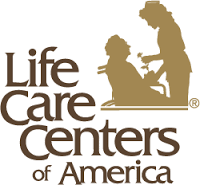Lawsuits brought by so-called “whistleblowers” are also referred to as qui tam lawsuits. The phrase “qui tam” is an abbreviation of a Latin phrase meaning “he who sues in this matter for the king as well as for himself.” In a qui tam lawsuit, an individual, known as the relator, brings a case on the Government’s behalf, alleging that the Government has been defrauded out of money. The Government, not the relator, is considered the real party-in-interest. If the Government succeeds and recovers money from the wrongdoer, the relator receives a percentage of the Government’s recovery. The False Claims Act, codified at 18 U.S.C. § 286, 18 U.S.C. § 287, and 31 U.S.C. § 3279, allows private parties to file qui tam or whistleblower lawsuits. Most states have similar whistleblower laws. Whistleblower lawsuits are an effective and powerful means for whistleblowers to assist the Government in stopping various kinds of fraud, such as Medicare and Medicaid fraud, fraud by defense contractors and other contractors who sell products to the Government, and other types of fraud that have a negative financial impact on the Government. If the lawsuit succeeds, the private party, or relator, who brought the suit initially may receive anywhere from 15% to 30% of the Government’s recovery. Because these cases often involve millions and sometimes, billions of dollars, whistleblower lawsuits can be very lucrative.
As an example, take the case in which Tenet Healthcare, which owns hospitals across the U.S., including Tenet subsidiaries that operated hospitals in Georgia and South Carolina, agreed recently to pay more than $516 million to the Government in settlement of a whistleblower lawsuit. Tenet Healthcare was accused of conspiring to pay kickbacks and bribes to several clinics that were operating in Georgia that targeted Hispanic, expectant mothers and directed them to Tenet hospitals for their deliveries. Tenet made claims to Medicaid for the services that were provided to these undocumented foreigners. It was also alleged that Tenet’s hospitals used contracts that were shams to try to cover up the payments of kickbacks to the clinics for the referrals of thousands of undocumented, pregnant patients. Medicare and Medicaid laws, as well as anti-kickback laws, bar hospitals from paying clinics, doctors or others for steering patients to them for treatment. The whistleblower who brought the lawsuit using private attorneys was the former Chief Financial Officer at a Tenet hospital in Georgia. He will receive approximately $84 million from the recovered funds for his role in bringing the case.
Other examples of significant recoveries by whistleblowers include a former sales executive for pharmaceutical giant GlaxoSmithKline who filed a qui tam lawsuit alleging off-label or unapproved marketing of several of the manufacturer’s drugs. That case was part of several whistleblower lawsuits against the manufacturer which resulted in a then record settlement of $3 billion in 2012. In another similar case involving a drug manufacturer, a former sales representative of Pfizer, Inc., brought a qui tam lawsuit, alleging the manufacturer engaged in off-label marketing of its painkiller, Bextra. The claims involved Pfizer’s marketing of the drug for unsafe and potentially dangerous uses. In that case, Pfizer paid $1.8 billion as part of a settlement with the Government for Medicare fraud. Whistleblower lawsuits have been filed against large nursing home chains, alleging that the nursing homes billed Medicare and Medicaid for services that were not provided to residents. These cases resulted in large recoveries by the Government and large rewards to the relators. In a case involving a defense contractor that was allegedly defrauding the Pentagon, the Government recovered $88 million as a result of the whistleblower lawsuit. The whistleblower in that case was a former manager for the defense contractor. His reward for being the whistleblower was 21.5% of the Government’s recovery, which totaled almost $19 million.
 Georgia Injury Lawyer Blog
Georgia Injury Lawyer Blog













